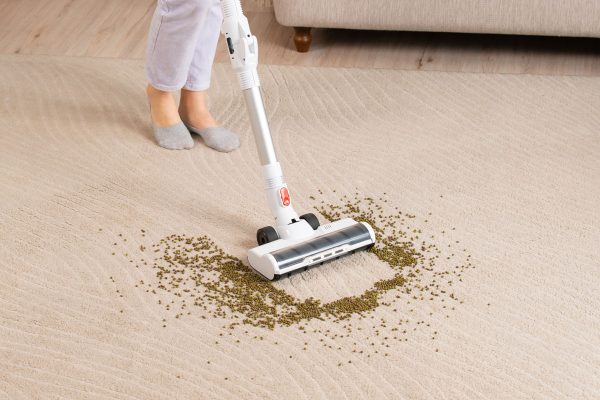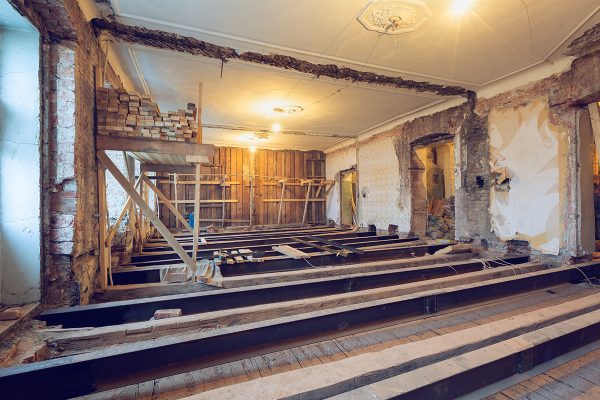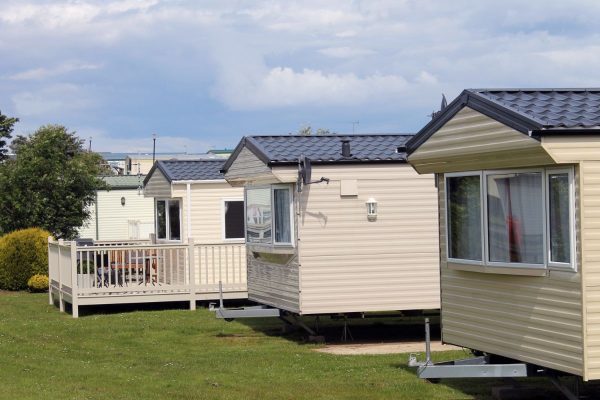Did you recently discover that your floor joist is pulling away from the header, and you want to know what you can do about it before it gets worse? You’ve come to the right place, for we have researched this question, and we have the answer for you.
The first thing you need to do is to determine the root cause. If you do not address the cause, the floor joists will simply continue to pull away from the header. Some potential causes could be:
- old house and/or building materials
- differential settlement
- shrunken wood
- poor drainage
The underlying causes of floor joists pulling away can also create other structural problems in your house. Typically, identifying the cause and repairing the issue requires a professional contractor's expertise. Then, the gap between the floor joist and header will not worsen.
Let’s talk more about this problem in the succeeding sections, including how to diagnose possible causes why the floor joists are pulling away from the header. We'll also briefly cover repair options for each cause.
Read on!
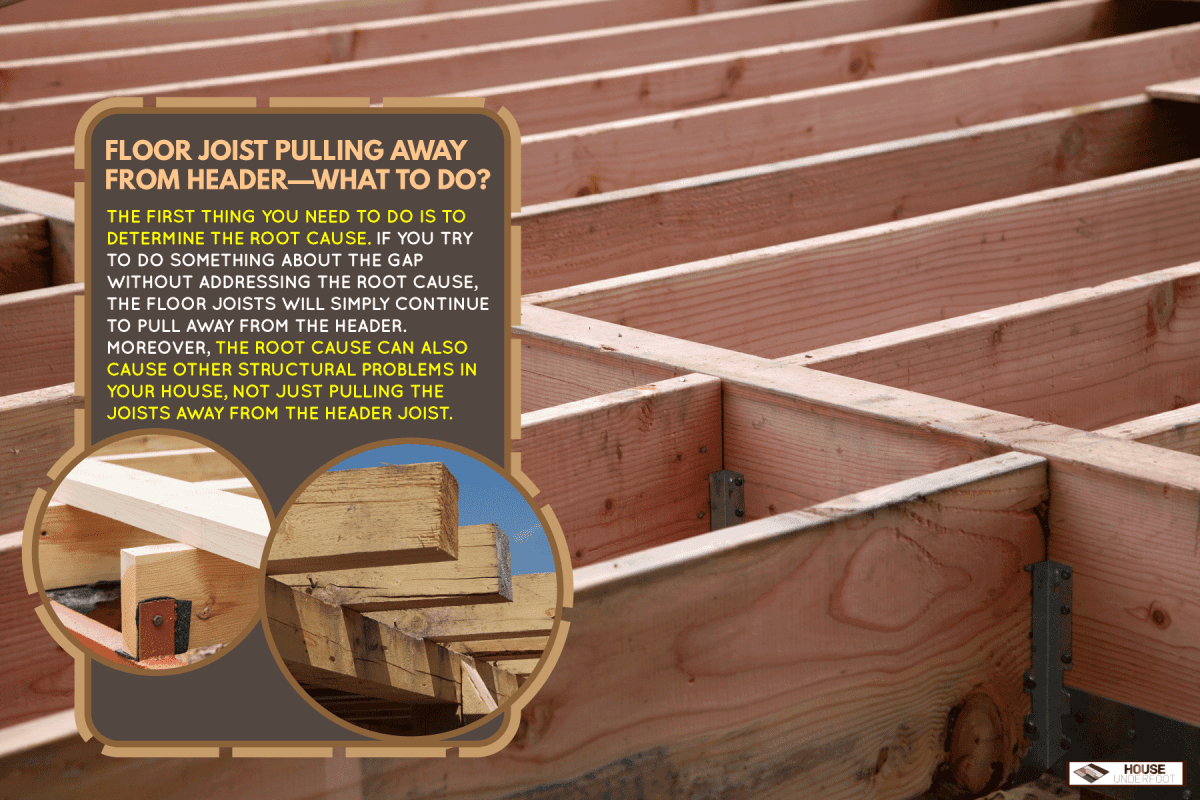
What are floor joists?
Floor joists are horizontal structural members in your house that transfer load to vertical structural members. There is usually a 16-inch space between each floor joist. However, this space can be different in places where the building code has a different specification for floor joist spacing.
Structural members are load-bearing parts of a structure. Examples of these are beams, columns, trusses, concrete slabs, bracings, and load-supporting walls.
The floor joists in your house are part of the floor system, and they are responsible for supporting the weight of everything inside a room. You install the subfloor on top of the floor joists. You then install the top floor, the part of the floor that you see, on top of the subfloor.
Horizontal support beams support the floor joists in key locations. These horizontal support beams, in turn, rest on vertical supports.
Floor joists rest on the sill plate, and the sill plate rests on top of the foundation wall. Header joists or rim joists often serve as framing for the floor and provide lateral stability.
What causes floor joists to pull away from the header joist?
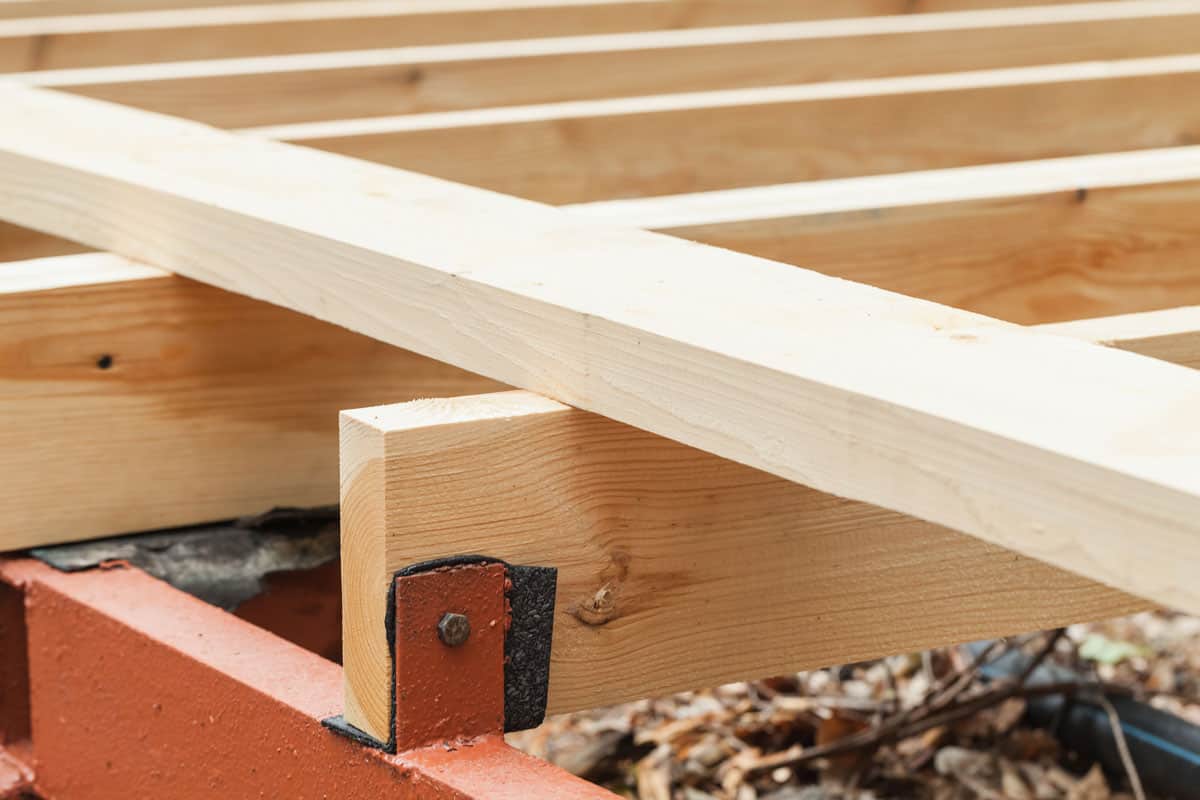
There are several reasons why the floor joists will separate from the header joist.
One common reason for floor joists pulling away from the header joist is the house's age. Building codes in the past are different from what they are today. The materials and how they put them together in the past are different than how it is done today.
Any repair to correct this problem should be done by professionals.
Professional contractors will also be able to tell you if the issue is normal for the age of the house and how to repair the gap on the floor joists. The wrong repair approach can make the problem worse or not do anything to address the problem.
What is differential settlement?

The soil under the foundation of your house can settle and shift. There is a level of settlement after the construction of your house that can be considered acceptable and normal. Beyond this can cause damage to your house.
Uneven distribution of soil foundation can cause differential settlement.
A good example is a house with a foundation that is made of sandy soil. Sandy soil has a good bearing capacity. Bearing capacity is the ability of the soil to support heavy objects like structures.
If a portion of the house is built on top of silty soil, which is known for having poor bearing capacity, then this part of the house will have a high chance of settling over time.
Once the foundation shifts because of differential settlement, the floor joists will start to pull away from the part of the wall that will shift because of the settlement.
A sign of differential settlement is when you see a part of the floor that has a downward incline, and doors that stop fitting.
Another common sign of differential settlement is the presence of cracks. These are commonly 45-degree cracks, although they can be of any angle depending on the settlement.
Consult a structural engineer to determine the best solution to stop the differential settlement. Once you address the problem of differential settlement, you can start to plan to repair the gap between the floor joists and the header joist.
What is wood shrinkage?
Wood shrinks and expands as its moisture content changes. An increase in moisture content will cause wood to expand, while a reduction in moisture content will cause wood to shrink.
Wood shrinkage can loosen fasteners which will lead to structural problems. The floor joist can pull away from the header joist over time because of wood shrinkage.
Consult a professional contractor to determine the best way to address the issue. Make sure that the contractor has liability insurance. An expert can check the surrounding wood for similar damage and determine the right approach that will prevent further damage.
This is not a DIY job because the repair can lead to a gap elsewhere or create a new problem if you do not know what you’re doing.
What are the types of wood shrinkage?
Lumber mills dry lumber to reduce the issues brought about by wood shrinkage in construction. However, some lumber can reabsorb moisture at the construction site if you do not properly store it.
Wood shrinks and expands in three directions.
Radial shrinkage happens perpendicular to the growth rings of the tree. The growth rings are the same as the medullary or radial rays that transport nutrients into the interior of the tree.
Tangential shrinkage, on the other hand, happens parallel to the growth rings. This is the type of shrinkage that lumber experience the most. The shrinkage happens along the lines of the medullary or radial rays.
Longitudinal shrinkage happens along the length of the tree. This is the type of shrinkage that lumber experiences the least.
Poor Drainage
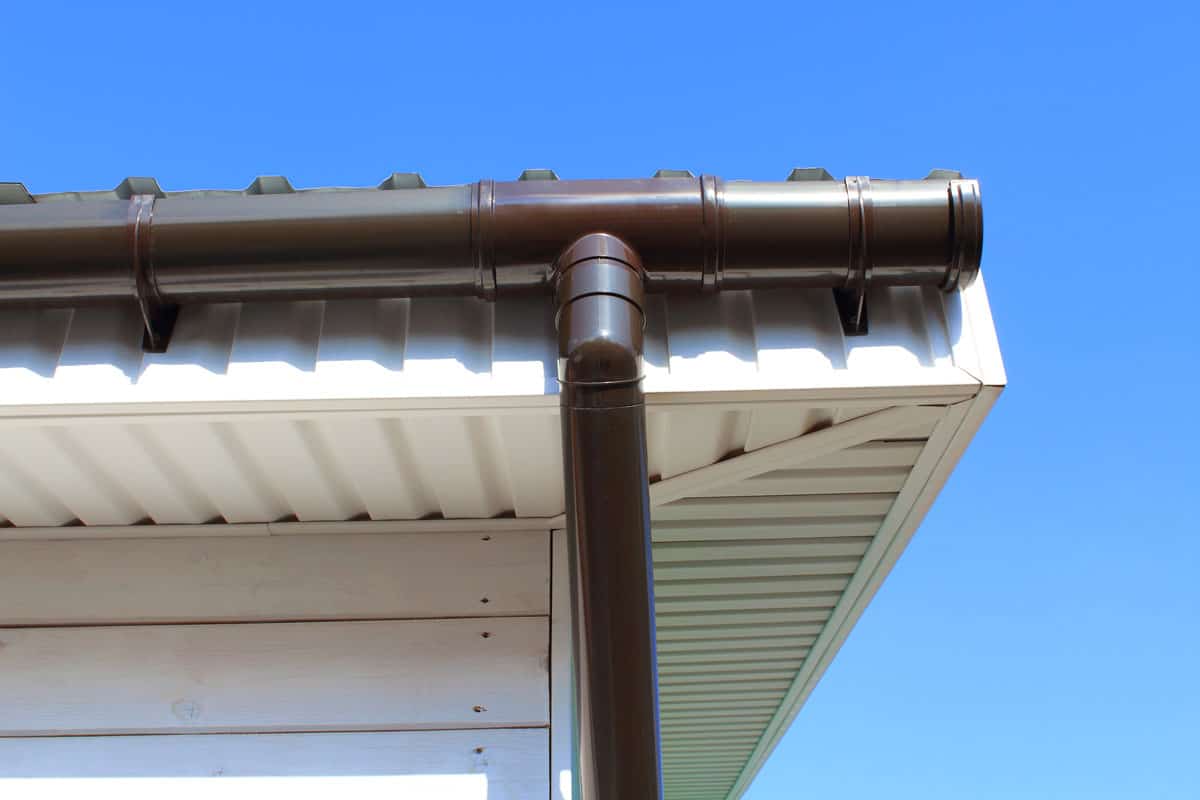
Poor drainage causes water to accumulate in areas where it can cause damage. The shape of the land can redirect water close to the foundation of your house. Soil can erode from where it is needed to where it is not needed.
Similarly, a downspout that dumps water to the ground close to the foundation will lead to water damage. Water dumped this way will immediately sink into the ground surrounding the foundation wall.
The ground will expand because of the water in it and will press against your foundation. The constant force will lead to the bowing of your foundation wall. This will also cause the foundation wall to crack.
The bowing of the foundation wall can cause the floor joists to pull away from the header joists.
Once the weather turns the water above the freeze line to ice, water inside cracks will expand and cause the cracks to grow bigger.
Water can cause erosion under the foundation wall that can strip the support under it. Once enough soil under the foundation is eroded, it can cause the foundation to shift like in a differential settlement. This situation can lead to floor joists pulling away from the header joist just like in a regular differential settlement.
Repairing The Damage
Have a professional inspect the damage. They will be able to come up with solutions to stop further water damage to the foundation. Once you install a proper water drainage system to prevent further damage, you can address the damage to the foundation.
After repairing the foundation, you can have someone determine if the gap between the floor joists and the header joist should be repaired or if stopping the source of the problem is enough.
If you need to repair the gap between the floor joists and the header joist, you will have to get a professional to do the job for you. This type of repair is not a DIY job because you run the risk of collapsing a section of your house or creating new gaps elsewhere in your house as you fix the current gaps.
Conclusion
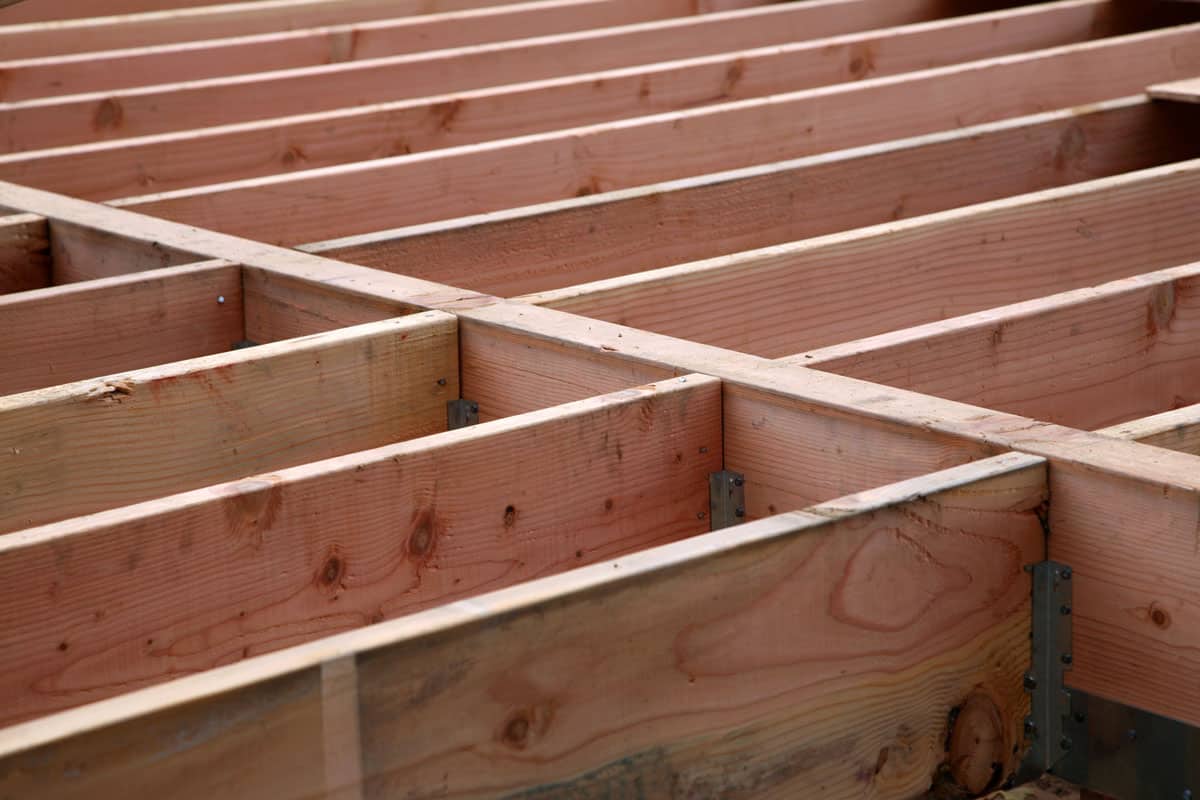
It is important to identify the reason why the floor joists are pulling away from the header joist. Address that root cause before you plan to repair the gap between the floor joists and the header joist.
If you enjoyed reading this article, you might find the articles below equally enjoyable to read:
Can You Park A Car On Rubber Flooring?
Kitchen Floor Ideas With Blue Cabinets – 11 Inspired Ideas With Pictures

